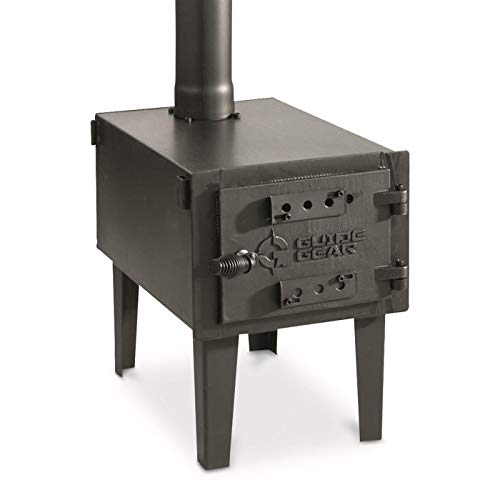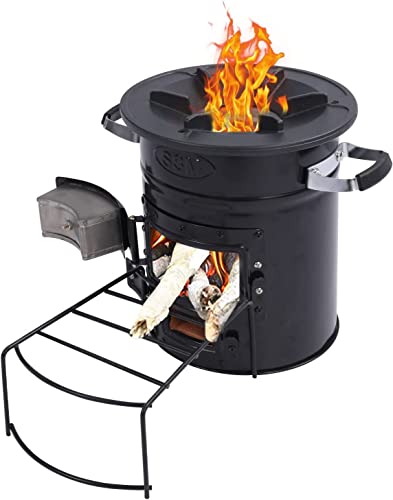The Most Effective Advice You'll Ever Receive On Wood Burners
페이지 정보
작성자 Cerys Collicott 댓글 0건 조회 7회 작성일 24-04-07 08:50본문
 Types of wood burners near me, Learn Alot more,
Types of wood burners near me, Learn Alot more, Wood burning stoves are a cost-effective alternative to expensive fossil fuel and electricity heating. They also reduce the need for imported wood, which is a major source of carbon.
Wood burning stoves are a cost-effective alternative to expensive fossil fuel and electricity heating. They also reduce the need for imported wood, which is a major source of carbon.In communities in which wood smoke is a common feature, studies have shown that it contributes to the wintertime pollution in the air. This is especially true for valleys that are vulnerable to temperature changes.
1. Pine
It is typical to use pine wood for log burners. However, it has to be dried out prior to use indoors. Unseasoned wood can create more creosote, which could cause chimney blockages. Furthermore, unseasoned pine wood produces a lot of carbon monoxide and smoke which can be toxic to pets and humans.
Many people don't use pine wood for their firewood because of its high resin content. They also fear that creosote will build up. Creosote, a tar-like substance, coats your chimney flue to prevent smoke from leaving your home. If it gets too thick, it can lead to the chimney to catch fire, which is very dangerous. Hardwoods such as oak, maple, Hickory, and Ash do not create much creosote and burn hotter with less smoke.
The reason pine wood produces a lot of creosote when it is burned is because it is not properly seasoned. All wood must be dried out prior to burning inside. The wood is seasoned to remove moisture, which makes it easier for it to ignite and burn. When pine wood is seasoned it will burn more quickly with little sparking or spitting, and will generate an excellent heat output. However, it can produce lots of creosote when it burns. This is why most people do not choose to use pine wood as firewood and prefer to use hardwoods such as oak and hickory instead.
2. Cedar
Cedar is a soft wood, and although it produces good heat, it does not produce as much heat as other types of hardwood firewood. It also burns fast and can lead to creosote accumulating in the chimney. This is why many people are wary to use cedar for their fireplaces.
Those who aren't concerned with creosote or other issues can use cedar for outdoor wood-burning fireplaces. Cedar isn't a good choice for indoor fireplaces, however due to the oils it releases during combustion. If you're planning to install a fireplace in your home, pair it with a denser contemporary wood burning stoves like oak or hickory.
The price of a firewood cord could range between $150 and $500. The amount of wood you purchase can last for 6 to 12 weeks If you burn it two times a day.
If you don't wish to buy a full cord, you can cut your own firewood and save cost. Certain tree services offer this service, but when you have the tools to cut your own firewood you can save more money.
Green or unseasoned wood usually costs less than seasoned wood. If you plan to purchase firewood, consider buying it in the spring if possible. This will give the wood a year to season, which helps it burn better and with less smoke. It also makes the process more efficient and reduces delivery fees. If you want to go a step further, consider hiring a professional to split and stack your firewood.
3. Birch
Birch wood burners in my area are a great choice to those seeking an fireplace log set that's eye-catching and environmentally friendly. These attractive logs, made of birchwood, feature realistic embers that create the appearance of a genuine fireplace fire.
Beautiful Birch wood logs are ideal for use in outdoor Wood Burners Near Me fire pits. They are simple to light and don't produce lots of sparks or smoke. They are a great choice for those with limited space in their patio or backyard.
The slender birch is a versatile hardwood tree with waterproof bark that is often employed for paper making, canoe building as well as homeopathy and other applications. The unique wood is sought-after by artists, musicians, and craftsmen for its unique grain and texture.
Silver birch is a great wood for making firewood. However it doesn't have the same density of other woods like oak or hornbeam. A cord of silver birch isn't able to heat as fast. Birch is a popular type of woodland timber that is harvested during forest thinnings.
Birch wood has a low resin content, which means it will not spark or spit. It can also be burned green. But, it must be properly seasoned. It's a great substitute to basswood that has a high water content and needs to be dried before burning.
4. Maple
Maple is a great option for wood-burning stoves because it is hot to burn and brightens quickly. It also has a good ability to spruce up. It doesn't last nearly as long as other hardwoods, such as oak and hickory.
This wood is available in hard and soft varieties and is available in a variety sizes and shapes including live edge. It also comes in a natural color that fits well with both modern and traditional decor. The wood comes in a kit that contains all the parts and accessories that you require to begin. The kit includes the pen/wand, solid brass tips (round and flat) and a shader tip. Shader tips are used to create realism by shading. This method is used by many people to create art commissions for their family members or pets.
Generally speaking, hardwoods like maple and hickory last longer than softwoods like pine and fir. This is because hardwoods are generally less pitch than softwoods which causes an extended burning time and leaves less creosote in the chimney.
Maple is a popular firewood that is found across the United States. It is a dense hardwood with high BTU/lb. It is also a breeze to split. It is a great alternative to ash firewood, that has been affected by the emerald-ash borer and could be in short supply. If properly prepared, this wood can have long burning, steady flames.
5. Cherry
The firewood logs of cherry are thick and produce a consistent burn. They're a great choice for those who want an ambience that lasts. The wood also emits an appealing scent and doesn't emit a lot of smoke. It can spark more than other hardwoods, but you can control this with an electric fireplace screen.
Pine Pine is readily available and affordable, however it doesn't get as warm as hardwoods and can make it difficult to start. You can use it to start a fire and for kindling, but after the flames are established, you must switch over to hardwoods.
Alder Alder has a moderate cost and is easy to split. It has a slow burning with a high heat output. However it can be a disappointment to use on an open flame since it is known to release sparks.
Ash Oak is considered the best hardwood. It produces the most heat, but is also expensive. However, it is worth it if you are looking for the longest lasting and most efficient wood for your fireplace.
Contact us today if seeking to install a new fireplace or wood stove to your home. We can inform you about the various models we have available and assist you in selecting the one that is right for you. Our Hearth Professionals who are certified by NFI are ready to assist you with any questions you might have.
6. Oak
Many people opt to use oak logs for their stove or fireplace as they have a wonderful traditional, classic scent. It is also more efficient than other types of logs, and can keep you warm for longer. The firewood made of oak is a fantastic option for anyone looking to spend long evenings in front of the fireplace or outside in the garden during summer with family and friends drinking wine and chatting.
Hardwoods like hickory and oak are more dense than conifers. This means they burn more hot and for longer. They also provide higher efficiency in fuel. This means they burn hotter and last longer, allowing more coals available to rekindle the fire.
Beech
While beech logs are good quality, they may take a while to get seasoned and split. They are able to burn well, generating brilliant flames and plenty of heat. They are best mixed with other slow burning logs like Ash or Oak.
You can find beech wood in local markets and gardens. But, you should avoid pallets used to transport lumber as they may contain screws and nails. They also have to be treated with chemicals such as methyl bromide so that they can be safely burned. If you're in search of inexpensive firewood for your log stove, ask local tree trimming crews, Wood Burners Near Me storm cleanup teams, or construction crews if they have any surplus wood that they'd be willing to give away. Be sure to check the wood source for safety and that it has been treated with a non-toxic preservative like linseed oil or mineral oils.
댓글목록
등록된 댓글이 없습니다.

